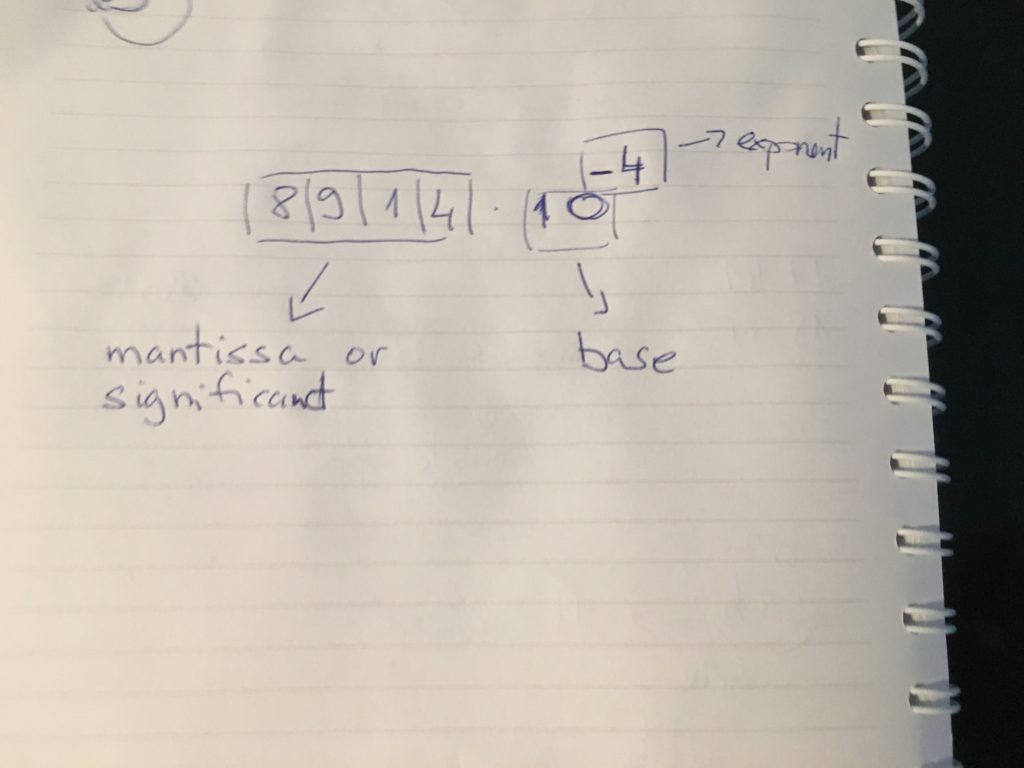
TL;DR
The disadvantage of fix-point decimal number representation is a limited number of significant digits that we can store in memory. That implies that we lose precision. Let’s examine floating-point number representation. The post is aligned with the Black Box Software Testing Foundations course (BBST) designed by Rebecca Fiedler, Cem Kaner, and James Bach.
Floating-point decimal number representation provides more precision but requires more computational power to calculate the actual stored value. This is why modern processors have co-processor that only does floating number calculations.
In the above picture, we can see that the floating-point number has the following components:
- mantissa or significant digits
- exponent
- base
It is a convention to show floating-point number with a decimal point after the most significant digit:
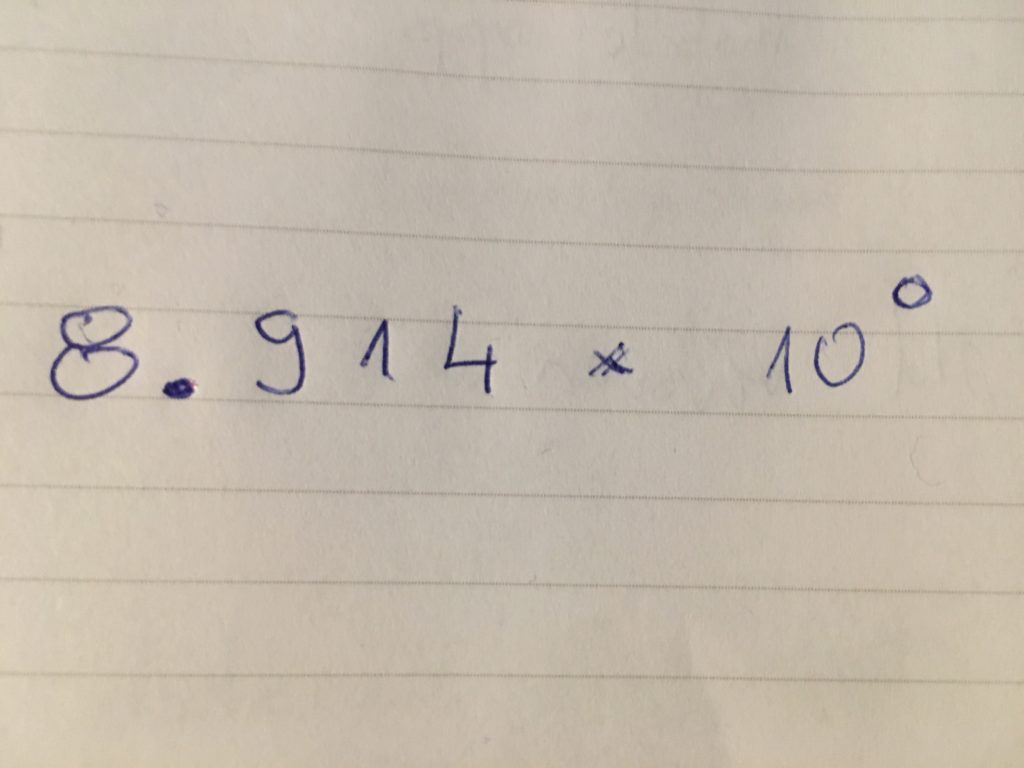
Overflow
The overflow happens when the result has more mantissa digits than we can store into boxes (memory):
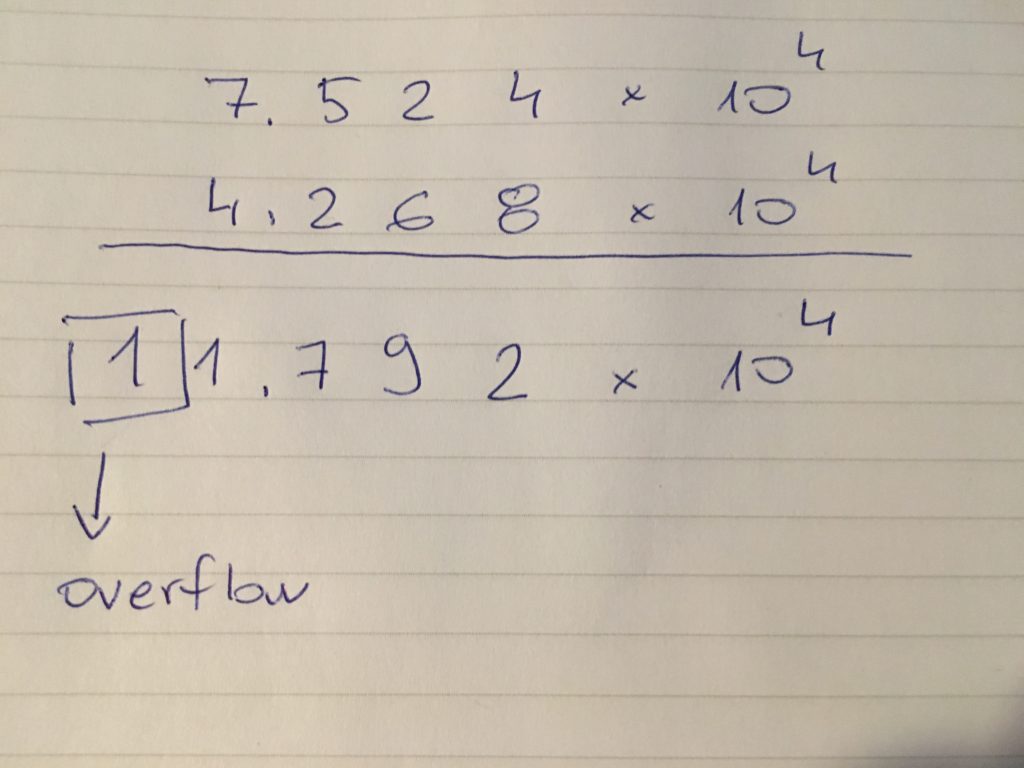
What computer would do in this case is round down:
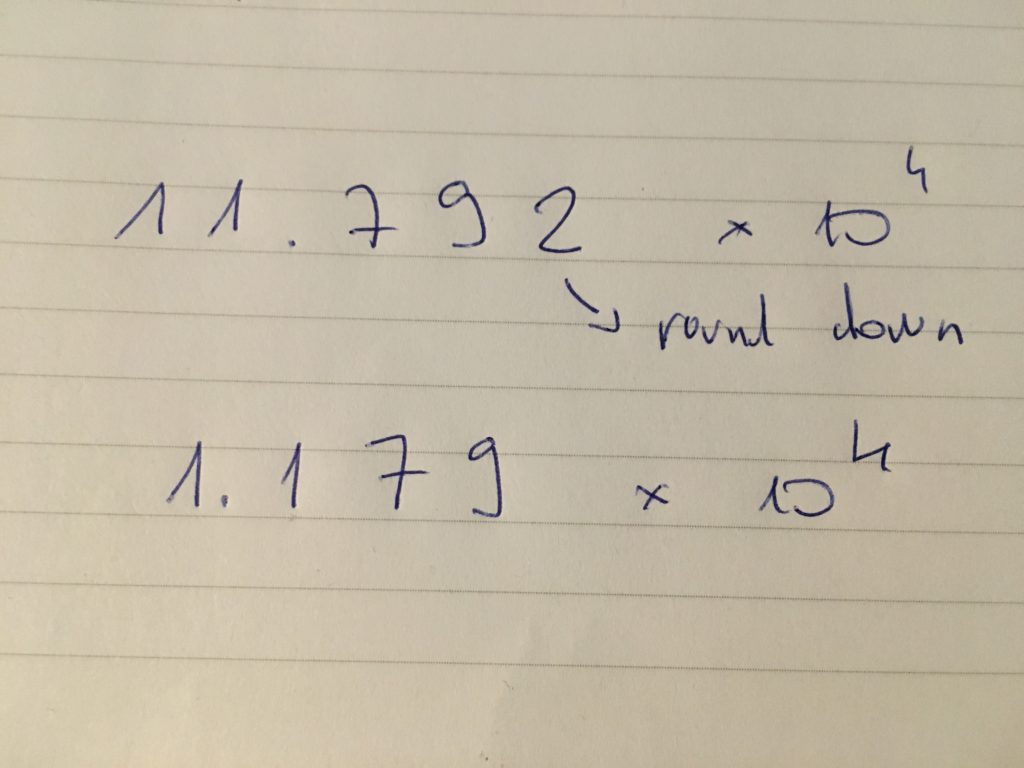
We need to store in computer memory all three parts of floating-point number:
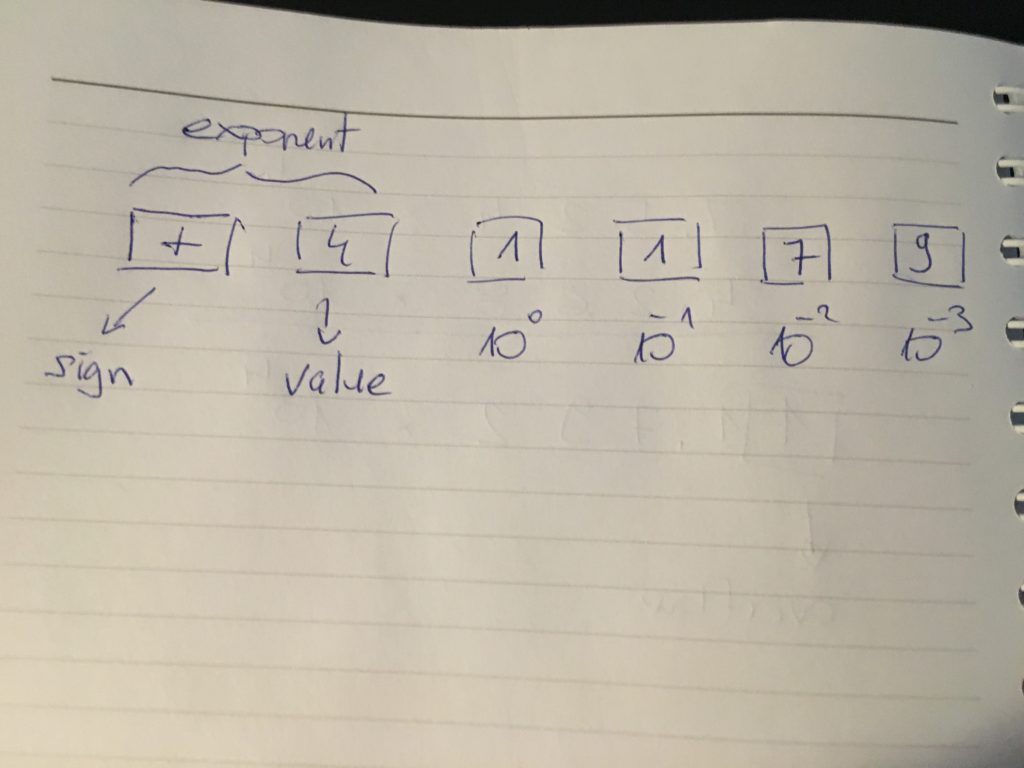
For exercise, what are the largest and smallest numbers that we can represent using floating-number representation from the picture above? Put your answer in a comment below.
More exercise. How would computer store following numbers using floating-point representation from above picture:
555511111.0
555599999.9
555501234.5
Which error is more significant, saying that 3.001 is 3.000 or saying that 2.99997 is 3.000?
What is the sum of:
1.234 x 10^10
1.234 x 10^-3
What is the product of 5.768 x 10^-3 and 4?
So if we want more precision for floating-point number representation, we must increase the number of digits for:
- mantissa
- exponent



